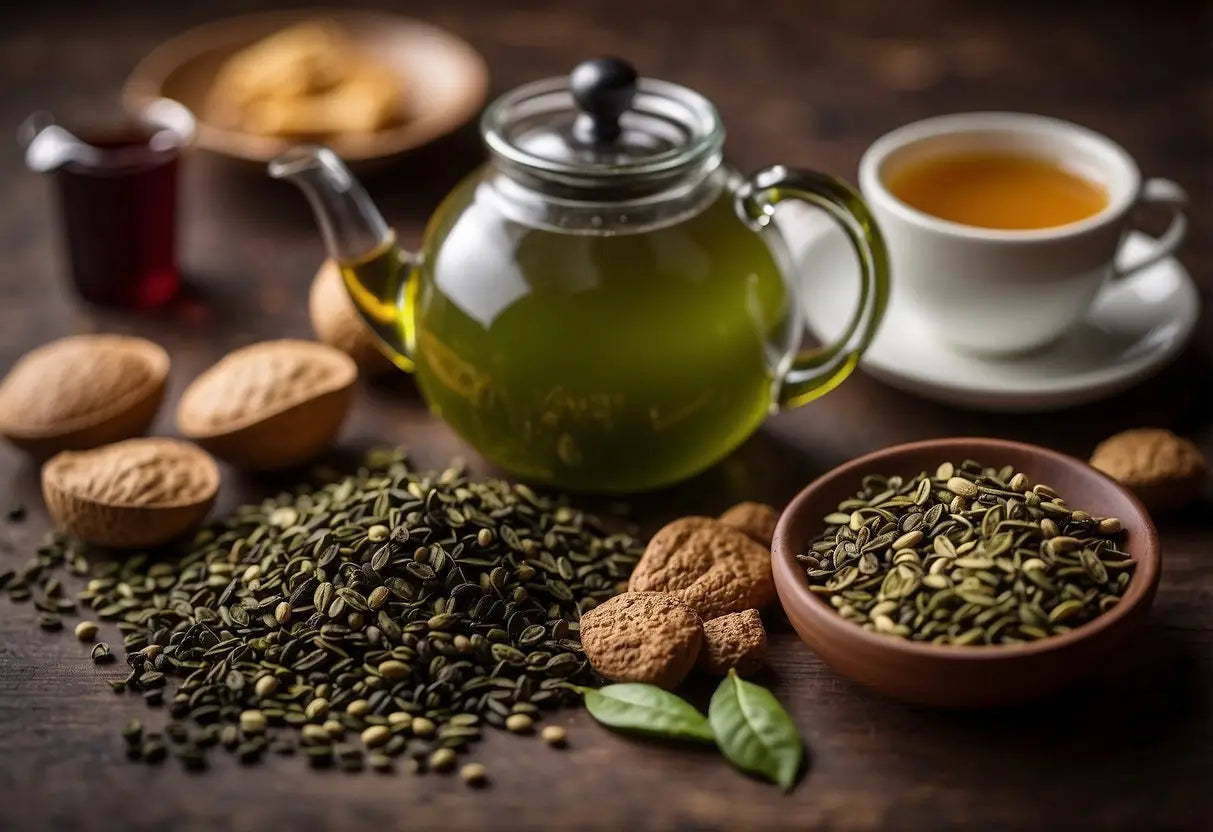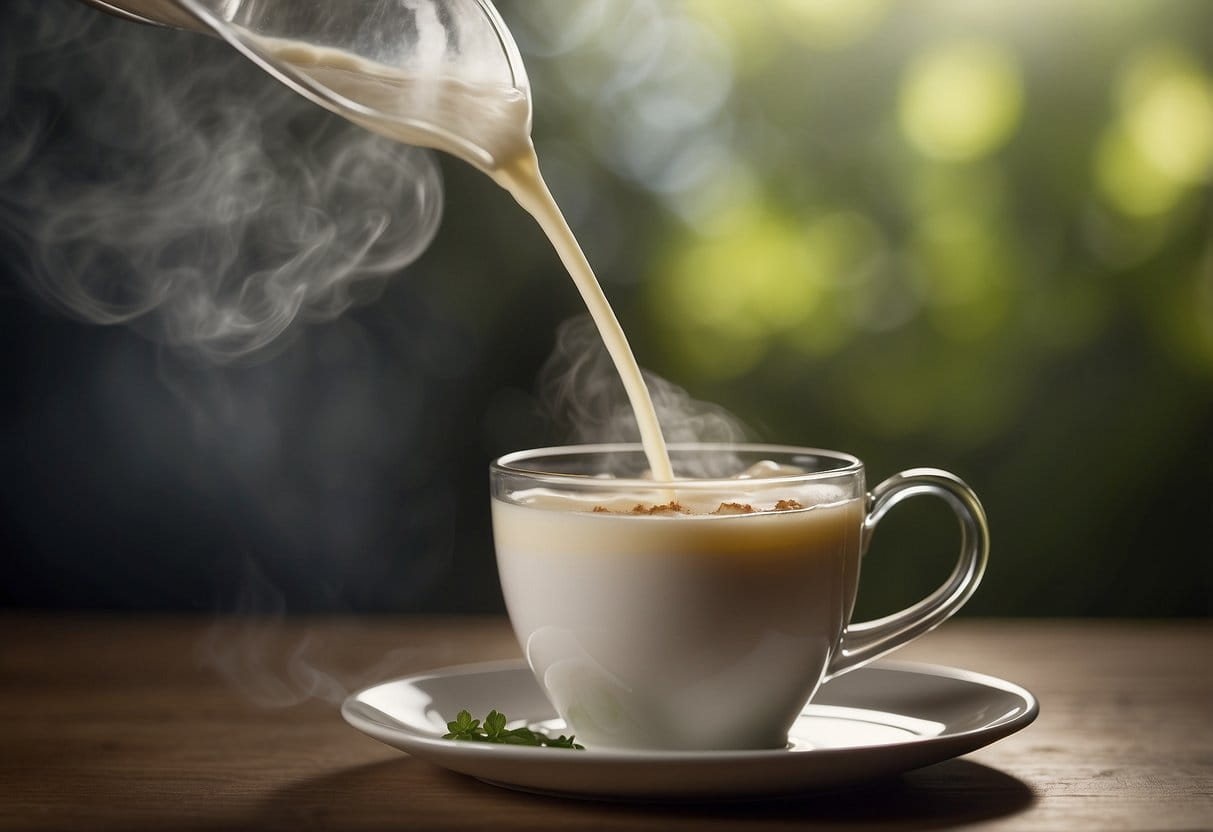Can You Steep Tea in Milk
Tea steeping methods can vary significantly, particularly between using water and using milk. Additionally, not all types of tea are suitable for milk steeping.
Steeping Tea in Water vs. Milk
Steeping tea in water is the traditional method. It allows the tea leaves to fully release their flavors, antioxidants, and caffeine. Use hot water just below boiling for most teas. The temperature and time vary based on the type of tea:
- Green tea: 175-185°F for 2-3 minutes
- Black tea: 206°F for 3-5 minutes
- Herbal tea: 206°F for 5-7 minutes
Steeping tea in milk offers a richer taste and may complement certain types of tea better. Use warm milk, not boiling, to avoid scalding. This method works well for teas like chai. Steeping time is slightly longer in milk than water to balance flavors.
Bestsellers
Types of Tea Suitable for Milk Steeping
Certain teas are particularly compatible with milk steeping. Chai tea is the most common example, traditionally prepared with a mix of spices and milk.
Black teas like Assam or Darjeeling also pair well with milk. They retain their robust flavors when steeped in milk.
Avoid using green or white teas with milk, as their delicate flavors can be overwhelmed.
For herbal teas, some blends like rooibos can also be steeped in milk for a different flavor profile.
Milk Selection for Tea Steeping

Selecting the right milk for steeping tea involves considerations such as the fat content of the milk, the use of plant-based alternatives, and the milk's temperature. Each factor can significantly influence the flavor and texture of your tea.
Effect of Milk Fat Content
Milk with varying fat levels will affect your tea's taste and mouthfeel differently.
Whole milk with high-fat content can provide a creamy texture and enrich the tea's flavor. On the other hand, skim milk lacks fat, resulting in a lighter, less creamy beverage. For a balance, 2% milk might be a good option as it offers some creaminess without being too heavy. The choice largely depends on personal preference and dietary considerations.
Using Plant-Based Milks
Plant-based milks, such as almond, soy, and oat, are popular alternatives to dairy milk.
Almond milk offers a subtle nutty flavor that complements many types of tea. Soy milk provides a creamier texture and can handle heat well, making it a solid choice for tea steeping. Oat milk is naturally sweeter and has a rich texture, enhancing both the flavor and mouthfeel of the tea. Ensure the plant-based milk you choose is compatible with the type of tea and does not curdle when heated.
Impact of Milk Temperature
Milk temperature plays a critical role in steeping tea.
Using cold milk can halt the steeping process, leading to under-extracted flavors. Warm milk helps to maintain the steeping temperature, ensuring the tea infuses properly. Avoid boiling the milk; it should be warm but not scalding hot. Using a thermometer to maintain the optimal temperature between 150°F and 170°F (65°C to 75°C) can help achieve the best results.
Lao Ban Zhang
Preparing to Steep Tea in Milk
Steeping tea in milk requires careful attention to the milk-to-tea ratio and proper preheating of your steeping vessel. These steps ensure optimal flavor extraction and a smooth texture.
Proper Milk to Tea Ratio
Getting the right balance between milk and tea is crucial. Using too much milk can dilute the tea's flavor, while too little might result in a bitter taste. The recommended ratio is typically 1 cup of milk to 1-2 teaspoons of loose tea or 1 teabag.
Whole milk is often preferred for its richness, but other types like 2% or almond milk can also work. Adjust the ratio based on the tea type and your preference. For stronger teas like black tea, use more tea leaves. For delicate teas like green tea, fewer leaves are better.
When measuring, consistency matters. Use the same measuring tools each time to maintain the desired taste. It's also helpful to experiment a bit to find your perfect balance.
Preheating the Steeping Vessel
Preheating the vessel helps maintain a consistent temperature, which is important for extracting flavors evenly. To preheat, fill your teapot or mug with hot water and let it sit for a minute. Then, discard the water before adding milk and tea.
Choose a vessel that retains heat well, such as ceramic or glass. These materials help keep the milk warm during the steeping process. For the best results, ensure the vessel is clean and free from residual flavors.
Maintaining the right temperature prevents the milk from scalding and helps preserve the delicate notes of the tea. This step is simple but makes a noticeable difference in the final flavor.
Steeping Process

Steeping tea in milk requires specific attention to duration and stirring techniques to ensure a balanced and flavorful infusion.
Duration of Steeping in Milk
The length of time you steep your tea in milk can significantly impact the flavor. Black tea typically requires 3-5 minutes to release its robust flavors. For green tea, a shorter duration of about 2-3 minutes is ideal to avoid bitterness. Herbal teas can steep for 5-7 minutes as they benefit from longer steeping times.
Use a timer to maintain consistency and achieve your desired strength. The temperature of the milk also plays a role. Ideally, milk should be heated but not boiled, maintaining a temperature of around 160°F (70°C). This helps the tea infuse properly without scalding the milk.
Stirring Techniques for Even Infusion
Stirring is crucial for an even tea infusion when steeping in milk. Start by gently stirring the mixture immediately after adding the tea to the milk. Use a teaspoon and stir in a circular motion to ensure the tea leaves or bags are fully submerged and surrounded by the milk.
Occasional stirring throughout the steeping process helps distribute the tea particles evenly. This prevents any concentrated pockets of flavor and ensures a consistent taste throughout the beverage. For loose-leaf tea, a tea infuser can be particularly helpful, allowing you to stir without scattering leaves throughout the milk.
Flavor Enhancement
Steeping tea in milk directly influences the flavor profile, creating a richer and creamier taste. This method can soften the tannins in tea, resulting in a smoother sip.
Certain types of tea, like chai or matcha, particularly benefit from being steeped in milk due to their robust flavors. Milk can complement the spices in chai and enhances the creaminess of matcha.
| Tea Type | Flavor Profile with Milk |
|---|---|
| Chai | Rich, Spicy, Creamy |
| Matcha | Smooth, Sweet, Velvety |
| Black Tea | Mellow, Less Bitter, Smoother |
Different milks can also affect flavors. Whole milk lends a fuller texture, while plant-based milks like almond or oat add unique nutty or earthy undertones.
You might also notice a difference in the aroma of your tea when steeped in milk. The warmth of the milk can bring out deeper, more complex scents from the tea leaves.
Experimenting with milk temperatures can further alter the flavor enhancement. Warm milk generally works best, preventing the tea from becoming too bitter or losing its distinct flavors.
Troubleshooting Common Issues

Weak Flavor
If your tea tastes weak, it might be that the milk's fat content is too high, blocking the extraction of tea flavors. Experiment with different milk types like skim or low-fat.
Curdling Milk
Curdling can occur if the milk is too hot or if the tea is too acidic. Steep the tea first in a bit of hot water before adding milk to avoid curdling.
Grainy Texture
If you notice a grainy texture, it might be undissolved tea particles. Use a fine mesh strainer or tea bag to improve the texture.
Bitter Taste
A bitter taste can result from over-steeping. Steep the tea for the recommended time, usually between 3-5 minutes, and remove it promptly.
Inconsistent Temperature
Uneven heating can cause problems. Use a thermometer to ensure the milk stays at a consistent temperature throughout the steeping process. Milk should be heated to about 160°F (70°C).
Scorched Milk
Scorching occurs when milk is overheated. Gently heat milk over low to medium heat without boiling to avoid this issue.
Separation
Separation might happen if the milk is too watery. Ensure you use fresh, high-quality milk with the right balance of water and fats.
← Older post Newer post →











